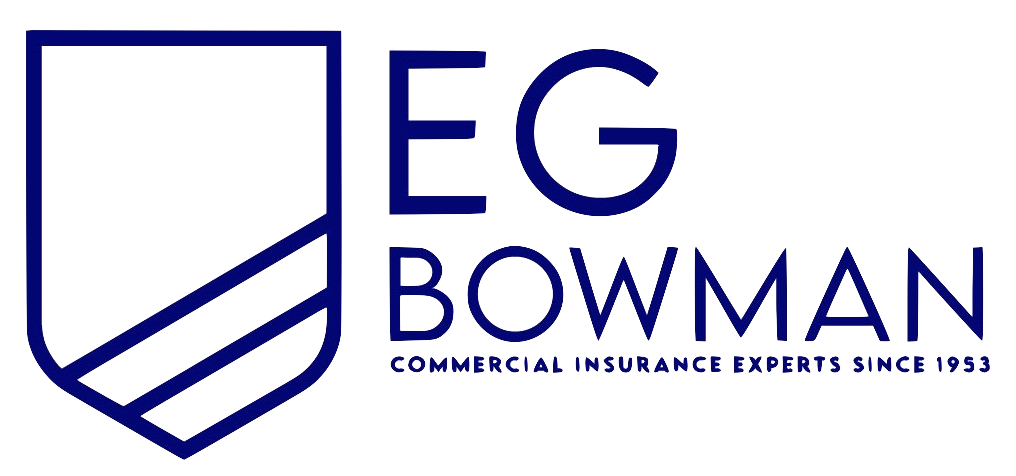New York Commercial Flood Insurance
See How We're Different:
or Call Us: 212-425-8150

Most Common Business Policies
Index
Contact Us
As businesses continue to thrive in New York, the risk of flooding poses a significant threat. Understanding commercial flood insurance is essential for every business owner. This article will provide in-depth information on commercial flood insurance, focusing on aspects unique to New York. Whether you're a small storefront or a large corporate office, this guide will help you navigate the complexities of obtaining the right coverage.
Understanding the Basics of Commercial Flood Insurance
Commercial flood insurance is designed to protect businesses from financial losses due to flooding. Unlike standard property insurance, which typically excludes flood-related damages, this specialized coverage is crucial for safeguarding commercial properties in flood-prone areas.
What is Commercial Flood Insurance?
Commercial flood insurance is a specific type of insurance policy that provides coverage for buildings and their contents in the event of a flood. Floods can arise from various sources, including heavy rainfall, storms, and overflowing rivers. This insurance protects commercial property owners from significant expenses associated with repairs and restoration after a flood event.
Policies vary in coverage limits and can be tailored to fit the needs of different businesses. It's essential to work with an insurance professional to ensure that the policy covers all potential risks specific to your location and business type. Furthermore, understanding the National Flood Insurance Program (NFIP) can be beneficial, as it offers federally backed flood insurance, which is often a requirement for businesses located in high-risk flood zones.
Why is Flood Insurance Important for Businesses?
The importance of flood insurance cannot be overstated. In New York, where flooding can occur due to hurricanes, nor'easters, or seasonal storms, businesses face substantial risks. Without adequate coverage, a flood can lead to devastating financial consequences.
Additionally, many standard commercial property insurance policies do not cover flood damage. Businesses without flood insurance may struggle to recover, facing potential closure due to the costs of repairs and loss of income during the downtime. This is particularly critical for small businesses that may not have the financial cushion to absorb such losses. Moreover, the recovery process can be lengthy and complicated, often requiring extensive documentation and coordination with contractors and government agencies. This added stress can hinder a business's ability to return to normal operations, making flood insurance not just a financial safeguard, but also a vital component of business continuity planning.
In addition to the immediate financial implications, the presence of flood insurance can also enhance a business's credibility with clients and partners. It demonstrates a commitment to risk management and preparedness, which can be particularly appealing in industries where reliability and stability are paramount. Furthermore, having flood insurance may even open up opportunities for businesses to secure loans or grants aimed at disaster recovery, further emphasizing the importance of being proactive about flood risks.

The Specifics of New York Commercial Flood Insurance
New York is unique in its exposure to flooding risks, with diverse flood zones and regulatory requirements influencing commercial flood insurance coverage.
New York Flood Zones and Their Impact on Insurance
Flood zones are geographic areas defined by the Federal Emergency Management Agency (FEMA) based on their risk of flooding. In New York, properties are categorized into different flood zones, which affects insurance requirements and costs. Properties in high-risk zones, labeled as Special Flood Hazard Areas (SFHA), face mandatory flood insurance requirements for federally-backed mortgages.
Understanding your specific flood zone is critical. Being located in a high-risk flood zone may result in higher premiums due to the increased likelihood of flooding. However, even businesses situated outside these zones may still face risks and should consider obtaining coverage. For instance, areas that are not classified as high-risk may still experience significant flooding due to heavy rainfall, storm surges, or other unforeseen natural events. This unpredictability highlights the importance of comprehensive risk assessment and the potential need for additional coverage options, such as excess flood insurance, to safeguard against unexpected losses.
State Regulations for Commercial Flood Insurance
New York has specific regulations governing flood insurance, particularly in regards to the National Flood Insurance Program (NFIP). Businesses in high-risk zones must adhere to these regulations, which outline the minimum coverage requirements.
In addition, New York State has implemented programs that encourage resilience and mitigation efforts. These efforts often result in reduced premium rates for businesses that invest in flood-proofing measures. Staying informed about such initiatives can save significant costs over time and ensure compliance with state regulations. Moreover, businesses that actively participate in community flood mitigation projects may not only enhance their own safety but also contribute to the overall resilience of their neighborhoods. Engaging in local planning and development discussions can provide valuable insights into future flood risk management strategies, ensuring that businesses are not only protected but also play a role in fostering a safer environment for all stakeholders involved.
Decoding the Terms of Commercial Flood Insurance
Navigating the technical jargon associated with commercial flood insurance can be daunting. Understanding common terms will empower business owners to make informed decisions.
Common Terms in Your Insurance Policy
When reviewing a commercial flood insurance policy, it’s vital to understand the terminology involved. Key terms include:
- Flood Coverage Limit: The maximum amount an insurer will pay for flood damage.
- Deductible: The amount the policyholder must pay out-of-pocket before insurance benefits kick in.
- Exclusions: Specific situations or types of damage not covered by the policy.
Familiarity with these terms simplifies the process of selecting the right insurance policy and ensures that you are adequately covered. Additionally, understanding the concept of Replacement Cost vs. Actual Cash Value is crucial. Replacement Cost refers to the amount needed to replace damaged property with new property of like kind and quality, while Actual Cash Value takes depreciation into account, which can significantly affect the payout amount in the event of a claim. This distinction can be essential for businesses looking to recover fully after a disaster.
Understanding Insurance Premiums and Deductibles
Premiums for commercial flood insurance vary significantly based on several factors, including location, the building's elevation, and the type of business. Higher-risk properties often face steeper premiums. Meanwhile, the deductible is another important consideration. A higher deductible can lower premiums, but it also means more out-of-pocket expenses in the event of a claim.
Businesses must weigh their risk tolerance and financial capability when choosing between higher premiums and deductibles. Consulting with an insurance expert can provide additional insights into finding a balance that suits your specific circumstances. Furthermore, it’s worth noting that some insurers offer discounts for implementing flood mitigation measures, such as elevating structures or installing flood vents. These proactive steps not only enhance the safety of your business but can also lead to significant savings on your insurance premiums over time.
The Process of Getting Commercial Flood Insurance in New York
Acquiring commercial flood insurance involves several steps, but careful planning can facilitate a smooth process.
Steps to Acquire a Commercial Flood Insurance
1. Assess Your Risk: Identify your flood zone and potential risks associated with flooding.
2. Gather Necessary Information: Collect pertinent information about your property, including construction details and previous flood claims.
3. Research Insurers: Compare different insurance providers and their policy offerings.
4. Get Quotes: Request quotes to find the best coverage options and premium rates.
5. Finalize Your Policy: Carefully review and finalize your policy with the chosen insurer.
Taking the time to understand each of these steps can significantly enhance your ability to find a suitable policy. It’s important to note that flood risks can vary widely based on location, so engaging with local experts who understand the specific flood history and regulations in your area can be invaluable. This localized knowledge can help you make informed decisions about the level of coverage you require, as well as any additional endorsements that may be beneficial for your specific business operations.
Selecting the Right Insurance Provider
Choosing the right insurance provider is as crucial as finding the policy itself. Look for companies that specialize in commercial flood insurance and have a strong reputation in the market. Customer reviews, financial stability, and the insurer’s experience with claims should all be considered in your decision-making process.
Additionally, working with an independent insurance agent can offer significant advantages. Their expertise might help you navigate the complexities of the policies available and find the best fit for your business needs. Moreover, independent agents often have access to a wider range of insurers, allowing them to present you with multiple options tailored to your specific situation. This can be particularly beneficial in a state like New York, where varying regulations and flood zones can complicate the insurance landscape. By leveraging their industry connections, these agents can also assist in negotiating better terms or identifying potential discounts that you might not have been aware of.

Filing a Claim for Commercial Flood Insurance
When a flood occurs, knowing how to file a claim is essential to ensure timely reimbursement for damages.
When and How to File a Claim
After experiencing flood damage, document the situation immediately. Take photographs and thoroughly assess the property condition. Notify your insurance provider as soon as possible to initiate the claims process. Generally, there is a specific time frame within which claims should be filed, so prompt action is advised.
Filing a claim usually involves filling out necessary paperwork and submitting evidence of the damages. Some insurers may also require an inspection of the property as part of the claims process. It’s wise to keep a detailed inventory of all affected items, including their original value and any receipts you may have. This comprehensive documentation can significantly bolster your claim and help expedite the reimbursement process.
Navigating the Claims Process
The claims process can be complex, but staying organized will help. Maintain detailed records of all communications with your insurance company and any expenses related to flood recovery. This information will be crucial during negotiations with your insurer. Additionally, consider creating a timeline of events from the moment the flood occurred to the present. This timeline can serve as a clear reference point for both you and your insurer, ensuring that no critical details are overlooked.
If you encounter issues or denials during the claims process, don’t hesitate to seek assistance from public adjusters or legal professionals who specialize in insurance claims to ensure you receive the compensation you deserve. These experts can provide invaluable guidance on how to navigate the intricacies of your policy and advocate on your behalf, especially if you feel that your claim is being undervalued or unfairly denied. Remember, the goal is to recover not just your losses but also to restore your business to its pre-flood condition, so leveraging professional support can make a significant difference in the outcome of your claim.
Frequently Asked Questions about Commercial Flood Insurance
Many business owners have similar questions regarding commercial flood insurance. Addressing these can help demystify some of the complexities involved.
Common Queries about Flood Insurance
One of the most frequently asked questions is whether flood insurance is required. While it's typically required for properties in high-risk flood zones, businesses outside these areas are still encouraged to carry coverage due to the unpredictable nature of flooding. Flooding can occur from various sources, including heavy rainfall, storm surges, and even melting snow, making it essential for all businesses to assess their risk and consider appropriate coverage.
Another common inquiry is what exactly is covered under a flood insurance policy. Generally, policies cover damage to the building's structure, electrical and plumbing systems, as well as some business personal property. However, coverage for specific items, like inventory or art, may vary, so it's important to specify all needs when obtaining a policy. Additionally, business owners should be aware that flood insurance often has a waiting period before it becomes effective, so planning ahead is crucial to ensure protection when it’s needed most.
Myths and Misconceptions about Flood Insurance
There are numerous myths surrounding flood insurance, such as the belief that homeowners' insurance covers flood damage. This misconception can leave business owners unprotected as they may not realize their standard policy excludes flood damage. It’s vital for business owners to read their insurance policies carefully and consult with their insurance agents to clarify what is and isn’t covered, especially if they are in a flood-prone area.
Another myth is that flood insurance is too expensive. While premiums can be high for properties in flood-prone areas, many options exist, and the cost can often be justified by the potential financial protection it offers. Investing in adequate flood insurance is a proactive measure for safeguarding business investments. Furthermore, various federal and state programs may provide financial assistance or subsidies to help lower the cost of premiums, making it more accessible for business owners to secure the coverage they need.
Understanding the claims process is also a critical aspect of flood insurance that often raises questions. Business owners should familiarize themselves with the steps involved in filing a claim, including documentation of damage and timelines for reporting. Being prepared can significantly streamline the process and ensure that businesses receive the necessary funds to recover quickly. Additionally, maintaining an up-to-date inventory of assets and photographs of the property can be invaluable when it comes time to file a claim, helping to substantiate losses and expedite recovery efforts.
